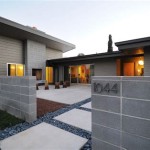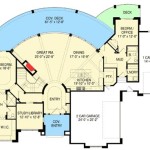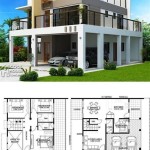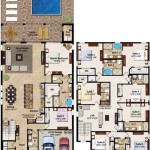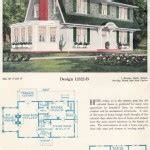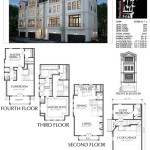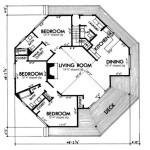Small loft style house plans provide an innovative and space-saving solution for homeowners seeking to maximize their living space without sacrificing style or comfort. These plans typically feature an open floor plan with a second level that serves as a sleeping or living area. The loft space is often accessed by a staircase or ladder and creates a unique and airy atmosphere.
Tiny houses and urban dwellings have popularized small loft style house plans. In these compact spaces, a loft provides an efficient way to create additional sleeping, storage, or office space without significantly increasing the footprint of the house. By utilizing vertical space, loft style homes offer a versatile and functional living solution.
In the following sections, we will explore different types of small loft style house plans, discuss their advantages and disadvantages, and provide tips on how to optimize space and functionality in these unique homes.
Consider these key points about small loft style house plans:
- Space-saving design
- Open floor plan
- Versatile use of space
- Increased natural light
- Unique and stylish
- Potential for privacy issues
- Heating and cooling challenges
- Limited storage space
- Stairway safety concerns
By carefully considering these factors, homeowners can make informed decisions about whether a small loft style house plan is the right choice for their needs and lifestyle.
Space-saving design
Small loft style house plans prioritize space-saving design strategies to maximize functionality and comfort within a limited footprint. Here are some key space-saving techniques employed in these plans:
Vertical space utilization: Lofts are a defining feature of these house plans, providing an additional level of living space without increasing the home’s overall footprint. The loft is typically accessed by a staircase or ladder and can be used as a sleeping area, home office, or storage space.
Multi-purpose furniture: Loft style homes often incorporate multi-purpose furniture pieces to maximize space and functionality. For instance, a sofa bed can serve as both a seating area and a sleeping space, while a coffee table with built-in storage can provide both a surface for placing items and additional storage capacity.
Built-in storage: Custom-built storage solutions, such as built-in shelves, drawers, and cabinets, are commonly used in small loft style homes to make the most of every nook and cranny. These built-ins can be incorporated into walls, under stairs, or in other unused spaces to provide ample storage without taking up valuable floor space.
Open floor plan: Small loft style house plans typically feature an open floor plan, which eliminates unnecessary walls and partitions to create a more spacious and airy feel. This open layout allows for better flow of natural light and makes the home feel larger than it actually is.
By implementing these space-saving design strategies, small loft style house plans offer homeowners a comfortable and functional living space without sacrificing style or functionality.
Open floor plan
Open floor plans are a defining characteristic of small loft style house plans. By eliminating unnecessary walls and partitions, open floor plans create a more spacious and airy feel, making the home appear larger than it actually is. This design approach offers several advantages in small loft style homes:
Improved natural light: Open floor plans allow for better flow of natural light throughout the home. With fewer walls to obstruct the path of light, the entire space is brighter and more inviting. Natural light not only enhances the ambiance of the home but also reduces the need for artificial lighting, leading to energy savings.
Increased sense of space: By removing walls and partitions, open floor plans create a more open and spacious feel. This is particularly beneficial in small loft style homes, where every square foot counts. An open floor plan makes the home feel more airy and less cluttered, contributing to a more comfortable and inviting living environment.
Enhanced flow and functionality: Open floor plans improve the flow and functionality of a home by eliminating barriers to movement. This allows for easier movement between different areas of the home, making it more convenient and enjoyable to live in. The open layout also facilitates better communication and interaction between family members and guests.
Versatility and adaptability: Open floor plans offer greater versatility and adaptability compared to traditional floor plans with separate rooms. The absence of walls allows homeowners to customize and configure the space to suit their specific needs and preferences. For instance, an open floor plan can be easily reconfigured to accommodate changes in family size or lifestyle, making it a more sustainable and long-term solution.
Overall, open floor plans play a crucial role in maximizing space, functionality, and livability in small loft style house plans.
Versatile use of space
Small loft style house plans offer a high degree of versatility in terms of space utilization, allowing homeowners to tailor the space to their specific needs and preferences. The open floor plan and unique loft area provide ample opportunities to create a functional and stylish living environment.
- Flexible room configurations: The open floor plan of small loft style house plans allows for flexible room configurations. Homeowners can easily divide the space into different zones or areas, such as a living room, dining area, and sleeping area, without the need for permanent walls or partitions. This flexibility makes it easier to adapt the home to changing needs and lifestyles, whether it’s accommodating a growing family or creating a dedicated workspace.
- Multi-purpose loft space: The loft area in small loft style house plans is a versatile space that can serve multiple functions. Typically accessed by a staircase or ladder, the loft can be used as a sleeping area, home office, library, or even a guest room. This multi-purpose space adds an extra layer of functionality to the home, maximizing the use of available square footage.
- Custom storage solutions: Small loft style house plans often incorporate custom storage solutions to make the most of every nook and cranny. Built-in shelves, drawers, and cabinets can be seamlessly integrated into walls, under stairs, or in other unused spaces, providing ample storage without sacrificing valuable floor space. These custom storage solutions help keep the home organized and clutter-free, contributing to a more comfortable and stylish living environment.
- Vertical space utilization: Small loft style house plans encourage the use of vertical space to maximize functionality. Wall-mounted shelves, hanging planters, and loft beds are just a few examples of how homeowners can make the most of the vertical space available. By utilizing vertical space effectively, small loft style homes can provide ample storage and living space without feeling cramped or cluttered.
The versatility of space in small loft style house plans makes them a great choice for homeowners who value flexibility, functionality, and style. These homes offer the ability to adapt and evolve as needs change, providing a comfortable and inviting living space for years to come.
Increased natural light
Small loft style house plans are designed to maximize natural light, creating a brighter and more inviting living space. Here are a few key ways in which these plans enhance the flow of natural light:
- Large windows and skylights: Small loft style house plans often feature large windows and skylights to allow ample natural light to penetrate the home. These windows and skylights are strategically placed to capture sunlight from different angles throughout the day, reducing the need for artificial lighting and creating a more energy-efficient home.
- Open floor plan: The open floor plan characteristic of small loft style house plans contributes to increased natural light. By eliminating unnecessary walls and partitions, the home feels more spacious and allows natural light to flow freely throughout the entire space. This open layout ensures that even the innermost areas of the home receive adequate natural light.
- Light-colored interiors: Small loft style house plans often incorporate light-colored interiors to enhance the reflection and distribution of natural light. White, cream, and other light colors on walls, ceilings, and furnishings help bounce light around the space, making the home feel brighter and more airy.
- Mirrors and reflective surfaces: Mirrors and other reflective surfaces can be strategically placed in small loft style house plans to amplify natural light. By reflecting light from windows and skylights, mirrors can help distribute it more evenly throughout the home, creating a brighter and more visually appealing space.
Increased natural light in small loft style house plans not only enhances the ambiance of the home but also provides numerous benefits for health and well-being. Natural light has been shown to improve mood, boost energy levels, and promote better sleep. It also reduces the risk of eye strain and other health issues related to prolonged exposure to artificial light.
Unique and stylish
Small loft style house plans offer a unique and stylish living experience, characterized by their open and airy spaces, creative use of vertical space, and blend of industrial and modern elements. These plans prioritize aesthetics and functionality, resulting in homes that are both visually appealing and highly livable.
One of the defining features of small loft style house plans is their open floor plan, which creates a sense of spaciousness and allows for a seamless flow of natural light. The absence of walls and partitions between different areas of the home fosters a sense of community and togetherness, making these plans ideal for families and social gatherings.
Small loft style house plans often incorporate industrial elements, such as exposed brick walls, metal beams, and concrete floors. These elements add a touch of edginess and character to the space, creating a visually striking and unique aesthetic. However, they are tastefully combined with modern amenities and finishes, such as sleek appliances, contemporary furniture, and stylish lighting fixtures, to create a harmonious and inviting living environment.
Another key characteristic of small loft style house plans is their creative use of vertical space. Lofts, mezzanines, and built-in storage solutions are commonly employed to maximize the use of available space without compromising on style. These vertical elements add depth and interest to the space, while also providing additional storage and living areas.
Overall, small loft style house plans offer a unique and stylish living experience that combines industrial charm with modern functionality. These homes are not only aesthetically pleasing but also highly livable, providing a comfortable and inviting space for families and individuals alike.
Potential for privacy issues
Small loft style house plans, with their open and airy layouts, can pose potential privacy concerns for homeowners. The lack of traditional walls and partitions between different areas of the home can make it difficult to create separate and private spaces, especially for bedrooms and bathrooms.
One of the primary privacy concerns in small loft style house plans is the proximity of the sleeping area to other living spaces. In many cases, the loft, which is often used as a bedroom, is located directly above the main living area. This can lead to noise and activity from the living area disturbing the occupants of the loft, affecting their sleep and privacy.
Another privacy concern is the lack of visual and auditory separation between different areas of the home. In an open floor plan, activities and conversations in one area can easily be seen and heard in other areas. This can be particularly problematic for private activities such as bathing, dressing, or working from home.
Additionally, small loft style house plans often incorporate large windows and skylights to maximize natural light. While this can create a bright and inviting space, it can also compromise privacy. If the windows and skylights are not properly covered or situated, they can allow for unwanted views into the home, especially at night.
Heating and cooling challenges
Small loft style house plans present unique heating and cooling challenges due to their open and airy layouts and the presence of the loft. Here are some key issues to consider:
- Uneven temperature distribution: The open floor plan characteristic of small loft style house plans can lead to uneven temperature distribution. Warm air naturally rises, so the loft area can become significantly warmer than the lower levels of the home during the winter. Conversely, in the summer, the loft can become uncomfortably hot due to heat rising from the lower levels.
- Difficulty in temperature control: The open layout and high ceilings common in small loft style house plans make it challenging to effectively control the temperature throughout the home. Traditional heating and cooling systems may struggle to maintain a consistent temperature, especially during extreme weather conditions.
- Energy inefficiency: The large windows and skylights often incorporated into small loft style house plans can contribute to energy inefficiency. During the winter, heat can easily escape through these openings, while in the summer, they can allow excessive heat to enter the home. This can result in higher energy bills and a less comfortable living environment.
- Noise from HVAC systems: Heating, ventilation, and air conditioning (HVAC) systems can be noisy, and in a small loft style house plan, the noise can be amplified due to the open layout. The HVAC system may need to work harder to maintain a comfortable temperature, leading to increased noise levels.
Addressing these heating and cooling challenges is crucial for ensuring a comfortable and energy-efficient living environment in small loft style house plans. Careful consideration of insulation, HVAC system selection, and passive design strategies can help mitigate these issues and create a more livable space.
Limited storage space
Small loft style house plans often face the challenge of limited storage space due to their compact size and open layouts. The absence of traditional closets and dedicated storage areas can make it difficult for homeowners to keep their belongings organized and out of sight.
One of the main reasons for limited storage space in small loft style house plans is the open floor plan. The elimination of walls and partitions to create a more spacious feel reduces the number of available surfaces for storage. Traditional furniture pieces, such as dressers and armoires, may not fit well in these open spaces and can disrupt the flow of the layout.
Another factor contributing to limited storage space is the presence of the loft. The loft area, often used as a sleeping space or home office, takes up valuable floor space that could otherwise be used for storage. Additionally, the loft’s height and accessibility can make it challenging to store items efficiently.
Finally, small loft style house plans often have limited closet space. Traditional closets with doors require additional floor space, which can be scarce in these compact homes. As a result, homeowners may have to rely on alternative storage solutions, such as under-bed storage, hanging shelves, and multi-purpose furniture.
Despite these challenges, there are several creative and practical ways to maximize storage space in small loft style house plans. Built-in storage solutions, such as wall-mounted shelves, drawers, and cabinets, can be incorporated into the design to provide additional storage without taking up valuable floor space. Multi-purpose furniture, such as ottomans with built-in storage or beds with drawers, can also help homeowners make the most of their limited storage options.
Stairway safety concerns
Small loft style house plans often incorporate staircases or ladders to access the loft area. While these staircases provide a functional means of reaching the loft, they also pose potential safety concerns that need to be carefully considered.
- Steep and narrow stairs: In order to maximize space, small loft style house plans may have staircases that are steeper and narrower than standard staircases. This can make it difficult and potentially dangerous to navigate the stairs, especially for young children, elderly individuals, or those with mobility impairments.
- Lack of handrails: To maintain a minimalist aesthetic or save space, some small loft style house plans may not include handrails on their staircases. However, handrails are essential for providing stability and support when using the stairs, particularly for those who may be unsteady on their feet.
- Open risers: Staircases in small loft style house plans may have open risers, which means that there are gaps between the steps. While open risers can create a more visually appealing and modern look, they can also pose a tripping hazard, especially for small children or those with poor depth perception.
- Poor lighting: Staircases in small loft style house plans may not always have adequate lighting, which can make it difficult to see the steps clearly. Poor lighting increases the risk of falls and accidents, especially at night or in dimly lit conditions.
Addressing these stairway safety concerns is crucial for ensuring a safe and comfortable living environment in small loft style house plans. Homeowners should carefully consider the design and features of the staircase to minimize potential hazards and ensure the safety of all occupants.










Related Posts

